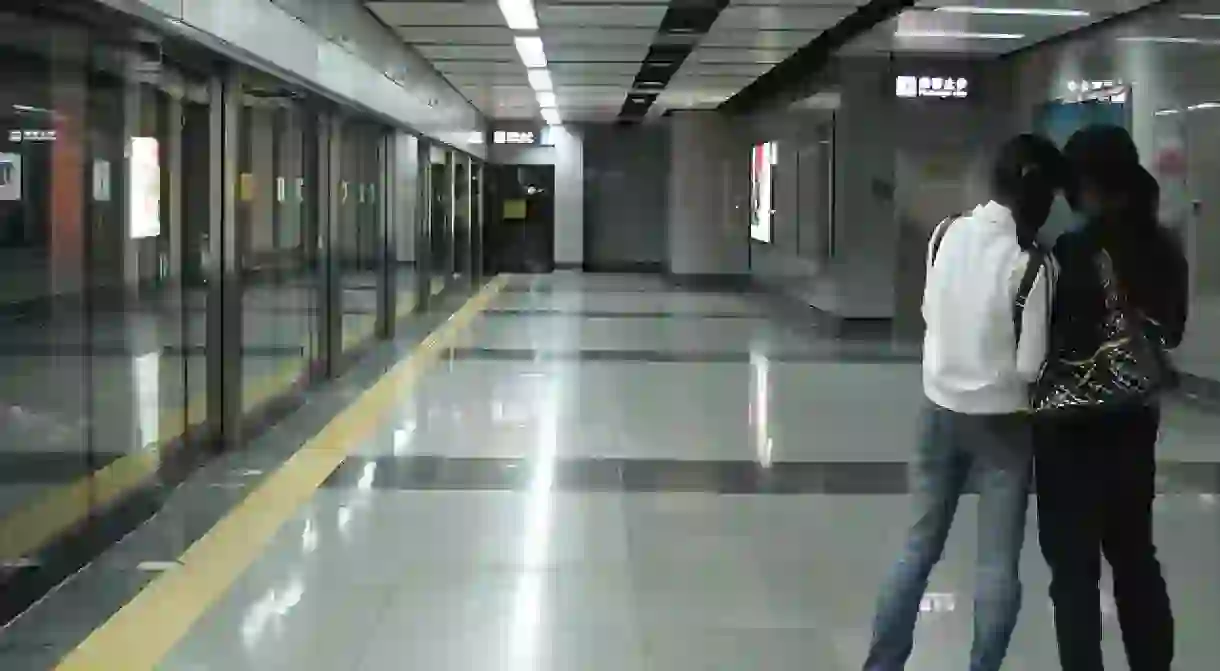9 Things to Know About Shenzhen Before You Go

Whether you’re day tripping from Hong Kong or planning to devote some time to getting to know the Southern Chinese metropolis, it helps to push aside your preconceptions about Shenzhen. The frenetic city has seen phenomenal changes over the last thirty years, but there’s a lot more to the mega-city than cheap massage parlors and flashy bankers. Here are ten pointers that will help you look beyond its bright, futuristic lights and get the most out of your visit.

1. Shenzhen Today is Unrecognizable to Those Who Lived There Thirty Years Ago.
Up until the ’80s, Shenzhen had been a market town of 30,000 inhabitants, surrounded by paddy fields. In 1979, China’s leader, Deng Xiaoping, turned the town to a city when he designated it a “Special Economic Zone.” This was an experiment with policy reform that would serve as a testing ground for the rest of China. Soon after, Shenzhen became one of the fastest growing cities in the world and other Chinese cities started following suit. Skyscrapers transformed the cityscape at a dizzying rate during an extended building boom funded by a vibrant economy. Shenzhen is now home to over ten million people.
2. It Has the Youngest Average Age of Residents in China and is a City of Migrants.
With its reputation for prosperity and opportunity, Shenzhen has become a magnet for the young, the bold, and the ambitious from all across China. The age of residents averages at below thirty. From highly educated migrants with PhDs relocating from China’s first-tier cities to factory workers coming in from the countryside hoping to transform their fortunes, the city is as chaotic as it is industrious. Home to China’s largest population of migrants, Shenzhen is a city of colliding cultures.

3. While The Special Economic Zone Itself is Relatively New, the Region is not Devoid of History.
With its vast, gleaming malls and sprawling skyscrapers, Shenzhen might have become a symbol of a China careering towards modernity at full speed, but it is not without its traditional charm. Shenzhen boasts a number of heritage spaces and venues that tell of a history of settlers stretching back millennia. Shenzhen’s rich and fascinating history also features a series of piracy incursions, when the town played an integral role in the escalating tensions that lead to the opium wars.
4. The City is Rather Empty Over Chinese New Year.
Travelers with an aversion to large crowds and tight subway squeezes may not necessarily think of visiting Shenzhen. But those who visit over the Chinese holidays will experience the city at its most muted and peaceful. During festive periods, huge swathes of the city’s population leave Shenzhen to travel home. Shopping will be out of the cards, but excursions to Shenzhen’s parks and New Year flower markets will make for a charming and atypically tranquil Shenzhen stay, topped off with seasonal fireworks.
5. It’s Been Named a UNESCO City of Design and is Fast Becoming China’s Creative Capital.
A city that continues to reinvent itself, Shenzhen’s experiment with capitalism saw the city transform into a manufacturing hub. It provided cheap labor for Hong Kong factories moving north and profiting from an increasing demand for “Made in China” knock-off goods. But the last decade has seen a new shift as a center of innovation and creativity. Branding itself the world’s biggest “maker” city, it is becoming a hub for all kinds of design and a boasts a great number of entrepreneurial success stories.

6. With a Wealth of Green Spaces, Shenzhen is China’s Most Garden Rich City.
Shenzhen grew fast, but that doesn’t mean its urban planning wasn’t forward thinking. In fact, with around 50% of streets lined with trees, parks, and green spaces, it’s not your stereotypical Chinese “urban jungle.” With more gardens per capita than any other Chinese city, Shenzhen is a strong example of how modernity and nature can coexist in a way that makes urban environments feel more livable.

7. Mandarin Might Be the Main Dialect Spoken, but It Certainly Won’t be the Only One You’ll Come Across.
While Shenzhen is located in the Southern Chinese province of Guangdong, where the local dialect is Cantonese, Mandarin is the official spoken language. This is the case across Mainland China. But China is home to a smorgasbord of dialects that speak to the diversity and vastness of the country. While traveling in Shenzhen, you are likely to hear regional dialects from all parts of China.
8. Meaning “Deep Drainage Ditches,” Shenzhen is Part of Cluster of Mega-Cities Located Where the Pearl River Flows into the South China Sea.
Neighboring Guangzhou, Zhuhai, and special administrative regions Macao and Hong Kong, Shenzhen is part of sprawling, industrial cluster of cities in which the average GDP has risen dramatically since China opened up. Traveling to and from these cities by coach or train is not difficult, with a quick trip into Hong Kong taking a couple of hours.

9. You’ll Be Advised to Keep an Eye on Pollution Levels.
Situated in the heavily industrialized Pearl River Delta, Shenzhen is not with out its fair share of smoggy air. Some days are worse than others, so it’s a good idea to keep an eye on pollution levels using an independent resource like this one and plan your day accordingly.













